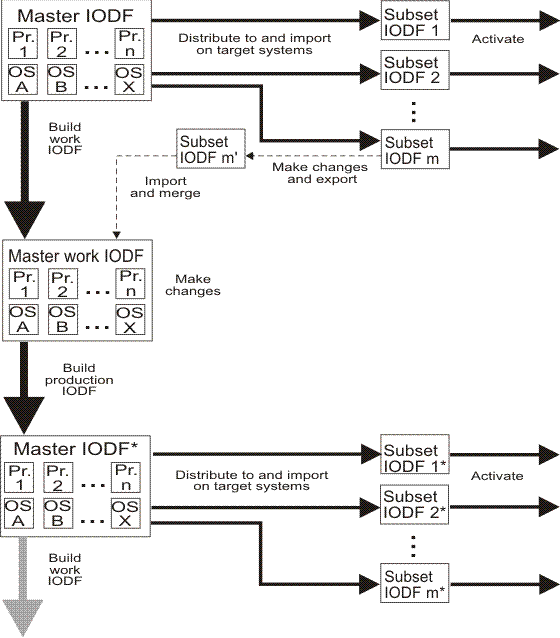 z/OS HCD User's Guide
z/OS HCD User's Guide
 z/OS HCD User's Guide
z/OS HCD User's Guide
|
Previous topic |
Next topic |
Contents |
Index |
Contact z/OS |
Library |
PDF
The master IODF concept z/OS HCD User's Guide SC34-2669-00 |
|
The master IODF conceptIn order to take full advantage of the available HCD functions and to keep a maximum of freedom for reconfigurations it is proposed to keep a master IODF. A master IODF may contain the I/O definitions for an entire enterprise structure. However, a user may decide to divide the I/O configuration definitions of the whole enterprise into several master IODFs, where little or no interference is expected. Major configuration changes are done in the master IODF. These include:
After such changes have been made, a production IODF is built. From this IODF comprehensive reports can be obtained. HCD provides a set of functions which allows the management of very large IODFs for their activation on individual systems, like POR, IPL, dynamic I/O changes, or for System z cluster management tasks. Using these functions, subset IODFs containing I/O definitions relevant to only one particular system may be built from the master IODF . There are no strict rules about what a subset IODF must consist of. Typically it contains:
The content of a subset IODF is specified in a configuration package (see Work with configuration packages). The subset IODF is transferred to the corresponding target system where it is imported and used as the IODF for that system. A subset IODF constitutes a fully functional IODF. When it is built from a master IODF, the processor tokens are preserved. If necessary, updates concerning the target system alone may be carried out using the subset IODF. Subsequently, the subset IODF can be sent back to the system administering the master IODF and merged back into the master IODF, thereby updating it with the changes made at the target system. Figure 14 illustrates the possible flow of I/O information according to the master IODF concept. Figure 14. IODF Distribution/Merge Process
 


|
 Copyright IBM Corporation 1990, 2014 Copyright IBM Corporation 1990, 2014 |